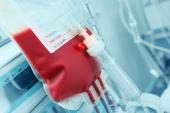EHRA Updates Its Popular ‘Practical’ NOAC Guide
Since 2013, the guide has helped physicians figure out what to do in scenarios not covered by guidelines, Hein Heidbüchel says.

The European Heart Rhythm Association (EHRA) has come out with the fourth iteration of its practical guide on the use of non-vitamin K antagonist oral anticoagulants (NOACs) in patients with atrial fibrillation (AF), which has helped physicians deploy these medications since it first came out in 2013.
Senior author Hein Heidbüchel, MD, PhD (Antwerp University Hospital, Belgium), past president of EHRA, explained that the guide is meant to supplement and not supplant clinical practice guidelines. The comprehensive document covers everything from dosing and drug-drug interactions to use in high-risk patient groups, management of bleeding, and what to do when patients undergo various procedures.
Practice guidelines from the European Society of Cardiology (ESC) and others contain evidence-based recommendations, “but for many topics that physicians in the field need to decide on, there is no clear evidence available, [even though] they need guidance anyway [on] how to go further in practice,” Heidbüchel told TCTMD. “And that’s exactly what our practical guide tried to fill in. So despite the absence of clear evidence, we give guidance on how they can approach certain situations.”
The EHRA guide was first published about 8 years ago, with previous updates released in 2015 and 2018. This latest iteration, written by a group led by Jan Steffel, MD (University Heart Center Zurich, Switzerland), and published in EP Europace, was released to coincide with the recent virtual EHRA Congress 2021.
What’s New?
Heidbüchel said the guide has been updated to reflect recent data on NOAC use in patients at the extremes of body weight, who were not well represented in the pivotal trials. There is a new figure indicating that NOACs should be used at approved doses for patients with a body weight between 60 and 120 kg (body mass index 17.5 to 40 kg/m2). For heavier patients, NOACs should be used with caution, and clinicians may consider either measuring NOAC plasma levels to ensure appropriate dosing or switching to a vitamin K antagonist (VKA). For patients with a lower body weight, clinicians may consider measuring plasma levels or opting for a VKA.
The authors also updated and expanded a popular part of the guide discussing potential drug-drug interactions. “It is not as simple as saying that VKA has a lot of drug-drug interactions and NOACs do not have any,” Heidbüchel said. “That’s clearly not the case.”
In addition to tables covering general interactions and the impact of anticancer and antiepileptic medications, which were included in the 2018 guide, the 2021 document now contains tables summarizing potential interactions with herbal medicines and drugs that have been used to treat COVID-19.
For many drugs, there are no data regarding interactions with NOAC therapy, “but at least based on the known metabolism of all these drugs, we stick out our necks and we say, ‘Well, if there is any interaction, it could be this or that and with that size or magnitude of effect.’ And that may make it so that you could look out for another drug that may have less potential for interaction, or maybe you should just abstain from treating the patient with a NOAC because it is really too unsure where you will end up.”
Although one of the main advantages of NOACs over VKAs is that there is no need for routine blood sampling, there are times when physicians might consider measuring NOAC plasma levels, and a section discussing these decisions has been updated. “What we want to say is that in cases where you really feel uncertain about where you will end up with this dosing, in well-controlled conditions and in centers that are experienced in plasma level sampling, it may be of benefit to see if the drug level is in the wide range of published drug levels that were seen in the trials,” Heidbüchel said. “If you’re far out of that range then that may indicate that you might be in trouble. There’s no clear relation with drug plasma level and effectiveness or safety of these drugs, but at least it gives some information to physicians on how they could continue in a given patient.”
Advice for the Pandemic
Beyond potential drug-drug interactions, COVID-19 has also made its way into the guide with a new section dedicated to special considerations for NOAC use during the pandemic. There was already a general preference for NOACs over VKAs before the crisis, and the advantage of the newer agents in terms of eliminating the need for regular blood draws has become even more important during the pandemic as a way to minimize risks of infection and the workloads of healthcare workers.
The authors note that there is increasing evidence supporting the continuation of anticoagulation in patients hospitalized with severe COVID-19. “However, clinical deterioration (particularly of renal function) as well as administration of concomitant medication . . . needs to be carefully observed and therapy adjusted accordingly,” they write, plugging the importance of care by a multidisciplinary team.
And for NOAC-treated patients receiving a COVID-19 vaccine, Steffel et al recommend following guidance around “minor risk” interventions as outlined in the guide’s section on what to do when patients are undergoing a planned invasive procedure, surgery, or ablation.
‘Hugely Popular’
Because the guide addresses a lot of topics for which there is no definitive science, much of it can be contested, Heidbüchel said. However, the document presents “a unified thinking in how to use these drugs effectively and safely” that is based on the collaboration of experts and industry representatives and the input of several hundred public comments, which supports better decisions around certain clinical scenarios than an individual physician guessing at the bedside, he said.
Moreover, over the years, debates over aspects of NOAC management have spurred research initiatives to collect better evidence, Heidbüchel said, pointing to the major accumulation of data regarding use of NOACs in combination with antiplatelet therapy in patients with concomitant AF and coronary disease in recent years as an example. “We draw a line today where we think we should go, and this can help on focused scientific efforts to resolve that,” he said. “I still think that that has a lot of value, and I think that explains why it has been so well received over the years.”
To that point, Heidbüchel pointed out that a condensed “key message” booklet printed by the ESC that accompanies the practical NOAC guide has been translated into several languages and has sold more than 442,000 copies to countries around the globe. “This clearly shows physicians want to have that information in their pocket,” he said. “It’s hugely popular all over the world.”
Todd Neale is the Associate News Editor for TCTMD and a Senior Medical Journalist. He got his start in journalism at …
Read Full BioSources
Steffel J, Collins R, Antz M, et al. 2021 European Heart Rhythm Association practical guide on the use of non-vitamin K antagonist oral anticoagulants in patients with atrial fibrillation. EP Europace. 2021;Epub ahead of print.
Disclosures
- The guide and derived educational materials (slide set, website, booklet, and NOAC card) were produced by and under the sole responsibility of EHRA, and supported by Bayer Pharma AG, Boehringer Ingelheim, Bristol-Myers Squibb and Pfizer Alliance, and Daiichi Sankyo Europe GmbH in the form of an unrestricted educational grant
- Steffel reports consultant and/or speaker fees from Abbott, Amgen, AstraZeneca, Bayer, Berlin-Chemie, Biosense Webster, Biotronik, Boehringer Ingelheim, Boston Scientific, Bristol-Myers Squibb, Daiichi Sankyo, Medscape, Medtronic, Merck/MSD, Novartis, Portola, Roche Diagnostics, Pfizer, Saja, Servier, and WebMD; ownership of CorXL; and grant support through his institution from Abbott, Bayer Healthcare, Biosense Webster, Biotronik, Boston Scientific, Daiichi Sankyo, and Medtronic.
- Heidbüchel reports minor personal honoraria from Bristol-Myers Squibb, Pfizer, Biotronik, and Daiichi Sankyo, as well as unconditional research support through the University of Antwerp or University of Hasselt from Bayer, Daiichi Sankyo, Boehringer Ingelheim, Bracco Imaging Europe, Medtronic, Boston Scientific, Biotronik, and St. Jude Medical.





Comments